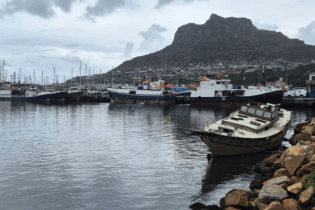Half-year figures 2012
- Net result increased 9%
- Merger between Royal Haskoning and DHV now fully operational
- Market outlook Europe will not improve
- Continue capitalisation on growth opportunities outside Europe
Amersfoort, the Netherlands, 4 September 2012 – The combined half-year accounts of project management, engineering and consultancy service providers Royal Haskoning and DHV showed increased profitability and net result despite difficult market conditions, economic uncertainty, as well as substantial merger activity.
Both former companies contributed equally to an operating profit (EBITA) over the first six months of 2012 at € 13.9 million. Net result in the same period was € 7.2 million, a 9% increase versus 2011. At € 362 million, revenue was down by 10%, of which 4% was due to the divestment of a Canadian subsidiary, which was executed in the second half of 2011. The remaining decrease of 6% was due to the difficult economic circumstances with some restructuring having been implemented in the first half of 2012.
Key figures for first six months
(€ millions, unless otherwise stated) |
2012
|
2011
|
Δ
|
| Revenue |
362
|
403
|
– 10%
|
| Added value |
277
|
302
|
– 8%
|
| EBITA* |
13.9
|
14.1
|
– 1%
|
| Net result* |
7.2
|
6.6
|
+ 9%
|
| Operating margin* |
4.0%
|
3.5%
|
+ 0.5 pt.
|
| * Including one off gains and losses. Results are combined and not consolidated. |
In the Netherlands and the United Kingdom the public sector market remained difficult in combination with prices being affected by downward pressure. Operations in Africa performed well, while results in Asia lagged behind. The Maritime and Aviation businesses, both active globally, contributed significantly to the results.
Growth opportunities
The Royal HaskoningDHV merger created many new opportunities and has been received with great enthusiasm by clients, employees and all other stakeholders. Being an important global player in maritime and water sectors and with a strong position in aviation, mobility and infrastructure, Royal HaskoningDHV sees growth opportunities in India, the Asia Pacific, the Middle East, South Africa and Brazil amongst others.
Projects and awards first half year
On the project front the sustainable and cost-effective wastewater treatment concept
Nereda® had a very successful launch in May, when the first
full-scale municipal sewage treatment plant using this energy saving technology was opened by the Prince of Orange Willem-Alexander in Epe, the Netherlands. Nereda
has created significant international interest and the number of Nereda’s in and outside the Netherlands is growing steadily.
The company’s subsidiary
NACO is advising the international consortium responsible for the management and development of
Viracopos International Airport in Brazil. NACO is working on airport planning. The international airport processed 7.5 million passengers in 2011 and its traffic is expected to grow to 15 million within the next 10 years, boosted among others by the 2014 World Cup and to enhance the long term potential of the area. In the consortium’s vision Viracopos will become the largest airport of South America.
Before the merger, DHV and Royal Haskoning worked together in a consortium for the
Mekong River Delta in Vietnam. The area is the size of the Netherlands and is home to 17 million people who need protection against flooding. In Oman, Royal HaskoningDHV is working on the
Port of Duqm, an area five times the size of London Heathrow Airport. The port provides new jobs for local communities and is a centre for trade and industry.
In the field of architecture Royal HaskoningDHV has won a number of awards, including for the sustainable renovation of the Amersfoort headquarters. The project is also nominated as a finalist for the
Dutch Design Awards. The Royal HaskoningDHV operations in South Africa were recently awarded the coveted
CESA Business Excellence Award, an appropriate accolade for being part of a global company.
Outlook
Royal HaskoningDHV expects continuing economic pressure in the regions and market sectors in which the company is active, and is continuously gearing the organisation accordingly. In the short term, the company aims to benefit from the increased market opportunities through the merger.







